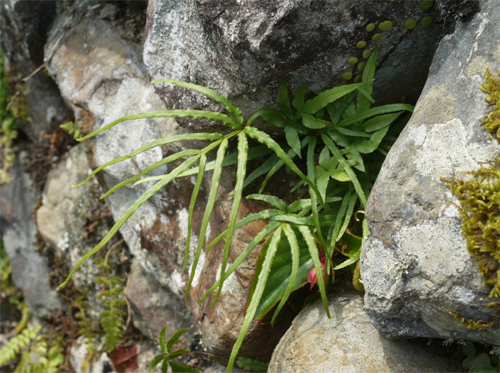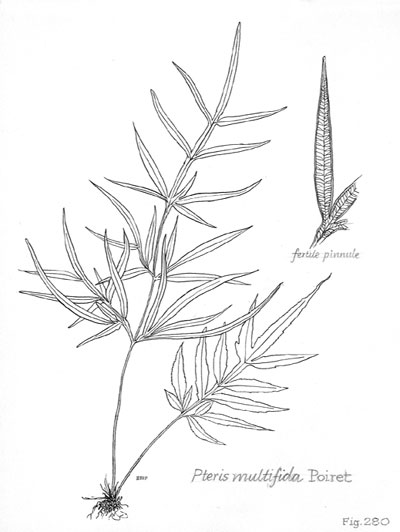| Pteris multifida | ||
Spider brake, Spider fern, Chinese brake, Huguenot fern, Saw-leaved bracken | ||
|
Etymology
Multifida means divided many times.
Description
Rhizome: short-creeping, densely scaly, scales dark reddish brown to chestnut brown.
Frond: 60 cm high by 25 cm wide, deciduous in colder areas, dimorphic, the sterile fronds leafier, blade/stipe ratio: 2:1. Stipe: dark brown to straw-colored at the base, sparsely scaly at base, glabrous above, vascular bundles: 1. Blade: 1-pinnate, irregularly ovate, papery, bright green, glabrous. Pinnae: 3 to 7 pair, linear, lower pinnae pinnate, upper simple, adnate to the winged rachis, fertile pinnae contracted; margins fertile entire, sterile serrate; veins conspicuous, free, simple or once-forked. Sori: continuous, submarginal, indusium: false, reflexed margin of pinnae stiff, pale brown, sporangia: yellowish brown. Culture
Habitat: terrestrial or on rock in disturbed areas in circumneutral soils.
Distribution: Japan, Korea, China, Vietnam, widely naturalized elsewhere.
Hardy to -10°C, USDA Zone 7.
Distinctive Characteristics
Differs from Pteris cretica particularly in having a winged rachis. Young plants can appear to be P. cretica.
Synonyms
Pycnodoria multifida (Poiret) Small |
|
|

Pteris multifida habitat, Tanabe City.Wakayama Pref.,Japan. keisotyo at commons.wikimedia.org |
